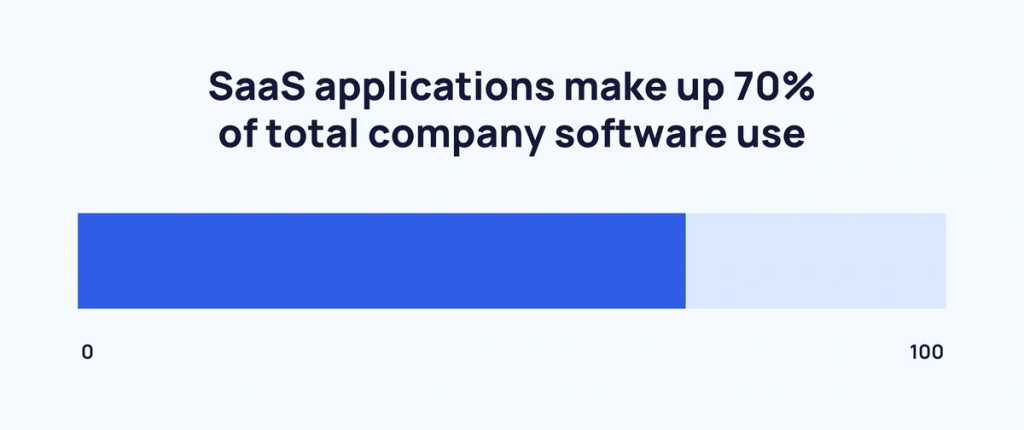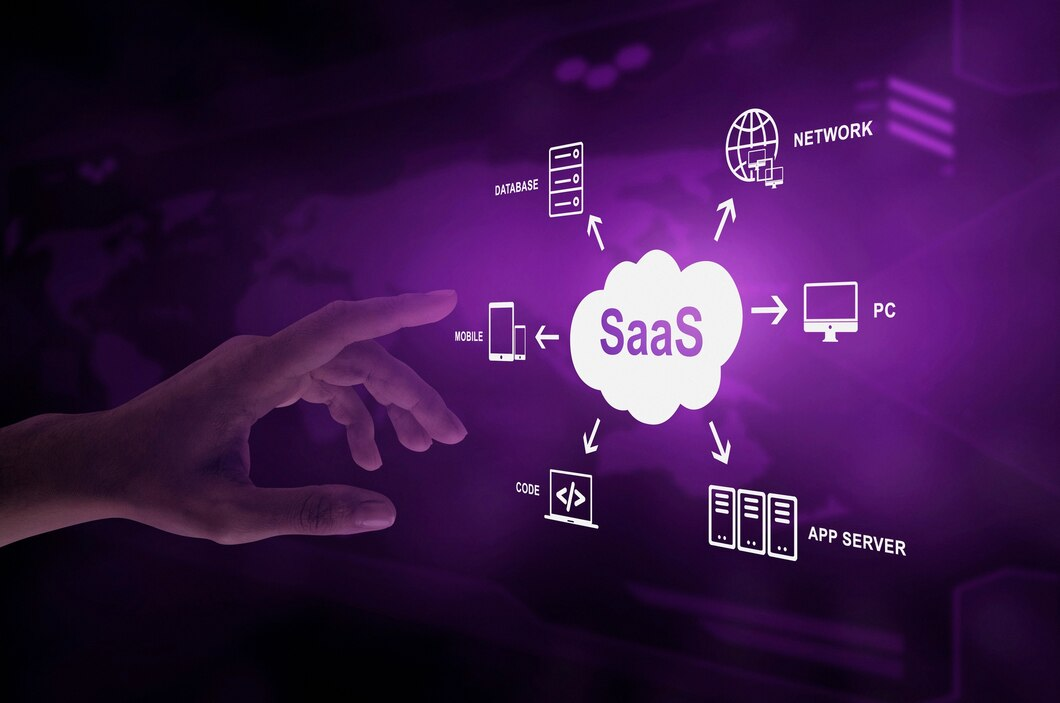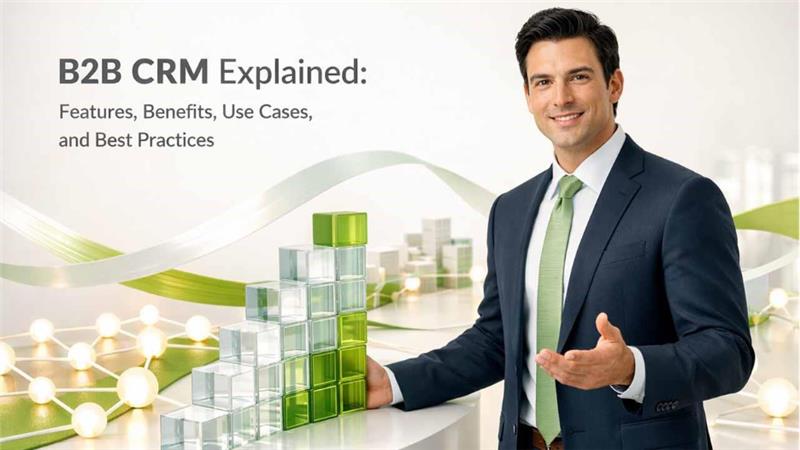Building a software-as-a-service (SaaS) product can be a game changer for any business looking to increase revenue streams and scale efficiently. With the SaaS model, you build a web-based software application and host it on the cloud, allowing customers to access it over the Internet.
This eliminates the need to install and run applications on individual computers and servers on-premises. The on-demand delivery method of SaaS coupled with its pay-as-you-go pricing model holds tremendous advantages over traditional software models.
If you know how to build a SaaS product right, it can greatly impact your business’s bottom line as well as long-term viability. This guide covers everything you need to know about developing your own SaaS product from scratch and successfully leveraging it to grow your business.
Understanding the SaaS Business and Revenue Model
Before diving into the details of SaaS product development, it’s important to understand what makes the SaaS model so lucrative for businesses.
The key appeal of SaaS lies in its subscription pricing model. Instead of a one-time licensing fee, customers pay a recurring subscription fee, usually monthly or annually, to access the software.
This results in:
- Predictable recurring revenue: Monthly or annual subscriber fees lead to a reliable, predictable revenue stream that businesses can count on.
- Higher customer lifetime value: As customers continue to pay subscriptions, their lifetime value far exceeds the revenue from one-time license purchases.
- Scalability: The pay-as-you-go model allows SaaS businesses to scale quickly in line with demand. There’s no need to sell licenses upfront to cover operational costs.
Lower customer acquisition costs: It is easier and cheaper to attract subscribers vs. onboarding new software license customers.
The SaaS model also enables true cloud delivery, multi-tenancy efficiency, and speedy deployment of new features. For customers, lower startup costs, greater flexibility, and lean operations are key advantages.
70% of all software used by businesses is in the form of SaaS applications. Clearly, SaaS offers a win-win value proposition for both businesses and their customers.

Step-by-Step Guide to Building a SaaS Application
Building a SaaS product is no trivial feat. It requires significant upfront investment and a multi-layered technology architecture to deliver the capabilities customers expect.
Here is a step-by-step overview of what’s involved in developing a robust SaaS application from the ground up:
1. Validate the SaaS Product Idea
As with any new product, the first step is to validate whether your SaaS software idea is solving a real pain point for potential customers. Get clarity on:
- Target customer segments: Who are the specific customer personas that will use and pay for your software?
- Value proposition: What core issues will your product address? How will it make customers’ lives easier?
- Market viability: Is there sufficient demand for your offering? How large is the addressable market?
- Competitor analysis: What competitive solutions exist already? How will you differentiate?
This discovery process involves thorough customer and industry research, including surveys, interviews, focus groups, and an evaluation of competitive offerings.
Ensure your SaaS product delivers 10x more value than it costs to attract maximum customers.
2. Define Requirements and Specifications
Once the SaaS product concept is validated, the next step is to define detailed requirements and software specifications to guide development.
- MVP features: Focus on the minimum viable product (MVP) feature set that customers need in the first release. Build a roadmap for additional functionality in future releases.
- Technical architecture: Map out the servers, cloud infrastructure, software frameworks, integrations, and tools required to build, deliver and manage the SaaS application.
- User experience: Outline how users will navigate through the software and define standards for UI/UX design.
- Security: Establish robust security controls, policies, and measures to protect customer data.
Locking down your requirements will set the stage for agile software development using an iterative approach.
3. Build the First Version
With the groundwork laid out, the development team can start bringing the specifications to life by coding the first working version.
- Sign-up workflow: Enable user sign-ups by building account registration, subscription management and payment integration features.
- Core app functionality: Develop the essential app capabilities, APIs and microservices to deliver primary value to customers based on the MVP feature set.
- Admin portal: Create self-service admin portals and dashboards for customer account and subscription management. Using dashboard templates in your SaaS product streamlines data visualization, making key insights more accessible and enhancing user engagement.
- Testing: Rigorously test across devices, browsers, networks and infrastructure configurations/traffic loads.
Use a phased rollout approach by releasing select features or targeting a smaller subset of customers first before expanding access.
4. Set Up the SaaS Infrastructure
While the software application is the heart of your SaaS product, you need a cloud-based delivery infrastructure to support it.
- Cloud hosting: Provision of high-availability servers, load balancing, auto-scaling configurations, and cloud database services.
- DevOps pipeline: Automate software build, test and release processes for speedy and reliable delivery of updates by following the best practices for database schema migration.
- Monitoring: Track performance metrics across infrastructure and application layers to detect issues proactively.
- Support: Offer 24x7 customer support via self-service portals, chatbots, email/phone channels manned by human agents.
Take advantage of pay-as-you-go infrastructure models to manage costs.
5. Drive User Adoption
Releasing your minimum viable product (MVP) is merely the starting point. You need a focused game plan to attract users and convert free signups into paying subscribers.
- Onboarding: Guide users through proper onboarding to activate key features that deliver core value.
- Promotions: Offer free trials, discounts or account credits to incentivize subscriptions.
- Product marketing: Invest in search, social, email campaigns and content strategies to attract users.
- Customer success: Proactively support customers to ensure high product usage and loyalty.
Closely track activation rates, renewals, upsells and customer feedback to refine strategies.

Developing a SaaS product is a complex, expensive undertaking. However, the long-term dividends can propel your business growth significantly if executed right. Here’s an overview of the major benefits:
1. Opening Up New Revenue Streams
The primary motivation for most businesses to build a SaaS product is to tap into new, predictable revenue streams beyond their existing products or services.
SaaS delivers subscription income that keeps growing with every new customer you add month-to-month or year-over-year. As your subscriber base expands, your recurring revenues increase in parallel.
The high customer lifetime value (LTV) of SaaS users enables you to reinvest for growth continually. Over time, SaaS could grow into a primary source of revenue or even the mainstay of your business.
2. Operational Efficiencies
Delivering software over the internet instead of managing on-premises software deployments leads to major operational efficiency gains.
With SaaS, your customers can manage their own software without adding overhead for your staff. Automation powered by the DevOps approach also boosts your productivity.
Cloud infrastructure and lean SaaS teams further drive cost savings you can redirect toward innovation and growth initiatives.
3. Stronger Customer Relationships
The hands-off, self-service nature of SaaS could seem like it leads to minimum customer interaction. But the recurring revenue model provides opportunities to continually engage users and foster loyalty.
As a SaaS operator, you can intricately track customer feature usage, identify power users, uncover adoption barriers and understand pain points much more closely than before.
These insights allow you to add more value via better onboarding, proactive support, community building, and innovation development, which customers actually want.
4. Access to Capital
Software and other digital/tech businesses with subscription revenue models tend to attract higher venture funding and valuations than traditional businesses.
Once you have a SaaS product with a proven monetization model and decent traction, investors will be more confident in injecting growth capital.
The path to securing funding is also much faster for SaaS startups than chasing product market fit for years before seeing investor interest.
5. Long-Term Business Viability
Perhaps most importantly, a successfully monetized SaaS product with happy customers paves the path for durable long-term viability of your business.
Instead of living or dying with each new product release, the recurring nature of SaaS creates a reliable foundation to support ongoing innovations.
Enterprise software giants like Salesforce, Microsoft, Adobe and many more have leveraged this dynamic to evolve over decades.
The loyalty and network effects inherent to SaaS also serve as barriers against competitors.
In summary, if envisioned and executed strategically, a SaaS product can transform the growth trajectory of any business over the long run.
Key Takeaways
- The SaaS model offers invaluable advantages, including predictable recurring revenues, higher customer LTV, increased scalability and lower acquisition costs.
- Validating product-market fit is the first step before investing effort into building a SaaS product.
- Developing SaaS software requires defining robust requirements, iteratively building features users want, and thoroughly testing them.
- Supporting cloud infrastructure, DevOps automation, uptime monitoring and customer support are critical.
- Driving user onboarding and adoption via promotions, marketing and customer success is key to monetization.
- SaaS products can boost revenues, efficiency, customer relationships, funding access and long-term business viability.
Building a successful SaaS business is challenging but rewarding. While specialized expertise across business, technical, and UX domains is vital, the most important ingredient is relentless customer-centric innovation.
Related Reads
How to Bend and Shape a SaaS Revenue Model to Ever-Changing Market Trends
Essential “SaaS Marketing” Strategies to Grow your Business easily



